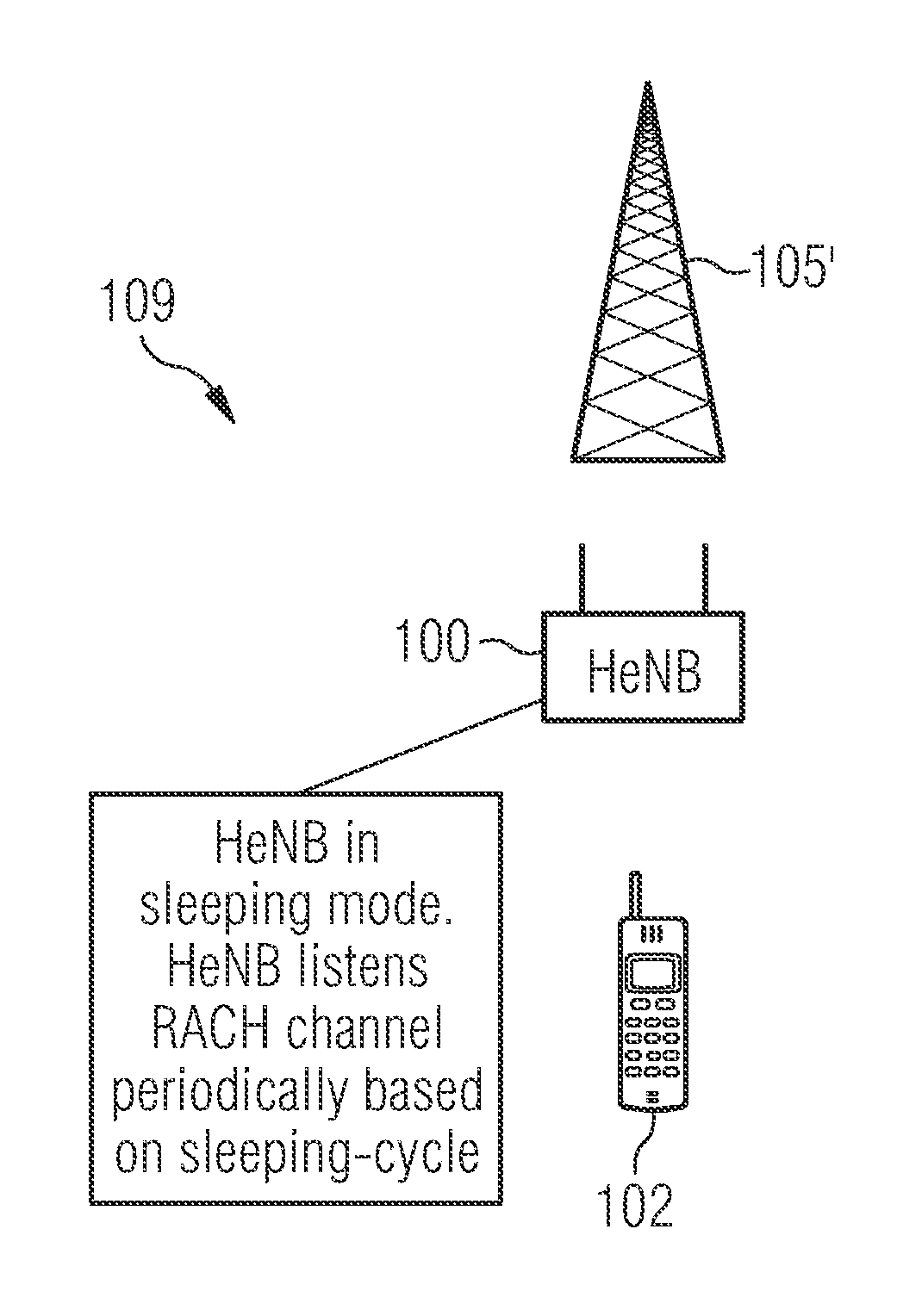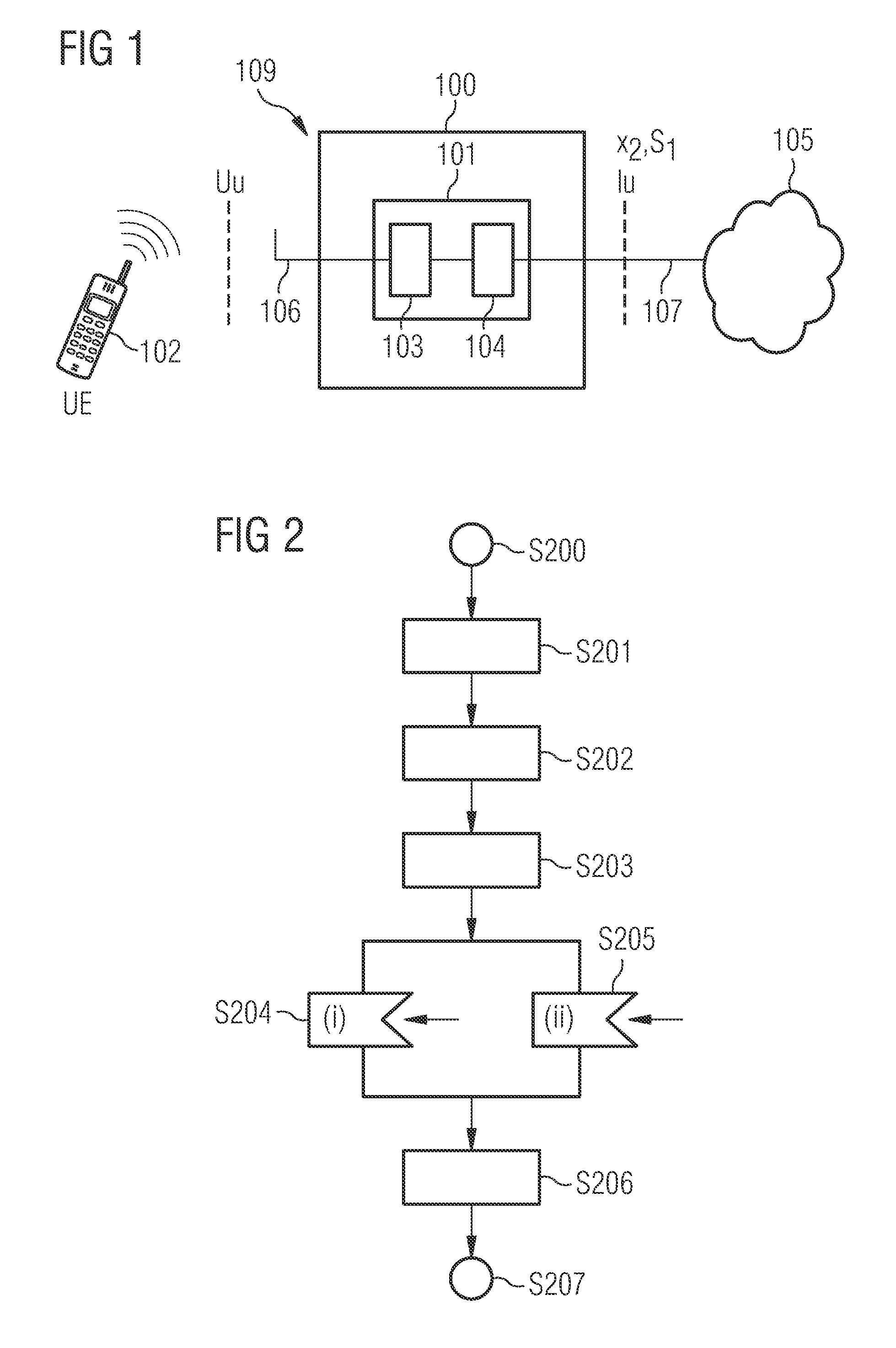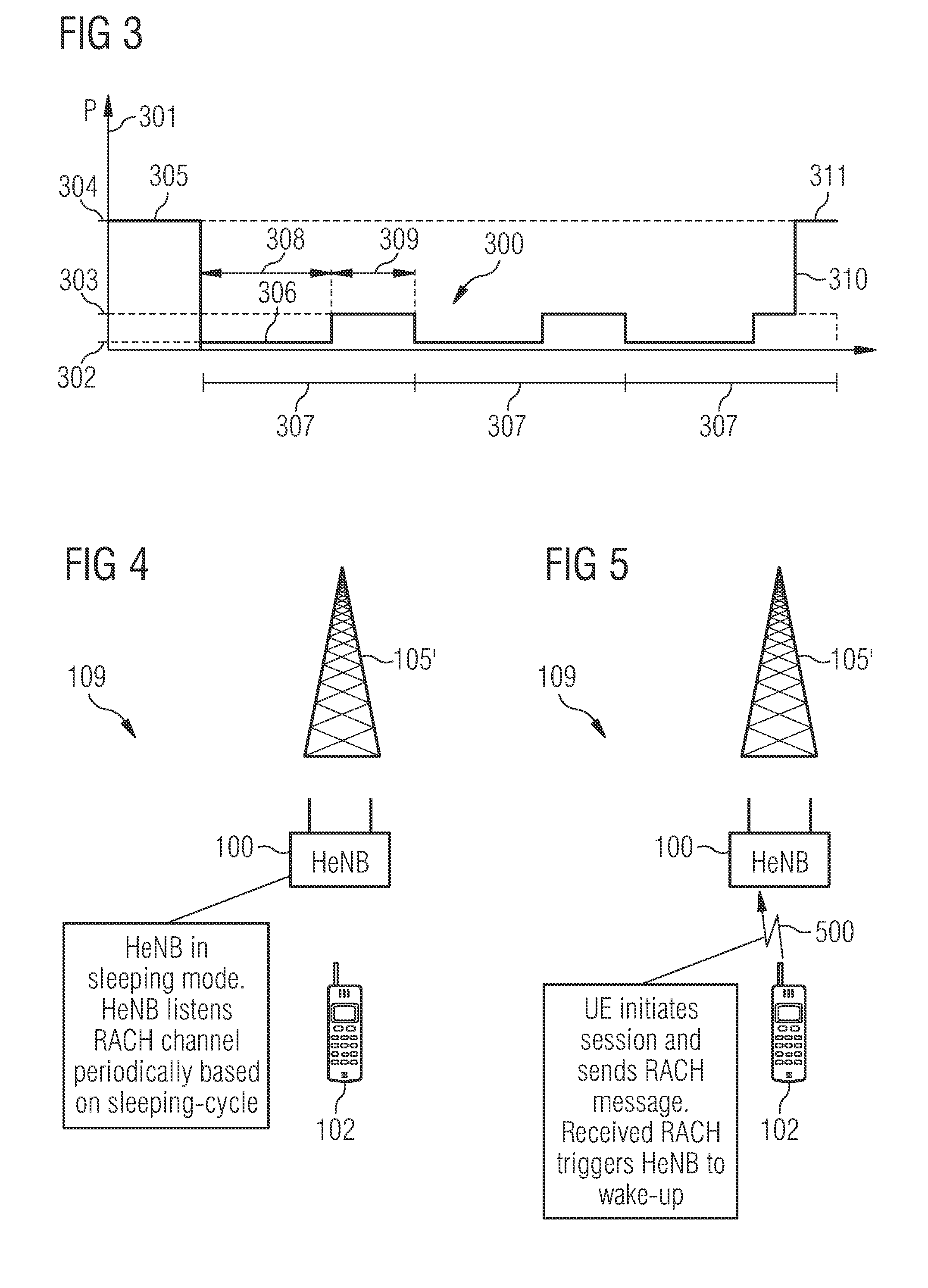Network Node, Network and a Method for Waking Up a Network Node
a network node and network node technology, applied in repeater circuits, high-level techniques, instruments, etc., can solve the problems of low capacity requirements, time periods during the day with high capacity requirements, and not being used all the time, so as to reduce power, increase capacity within a cell, and save energy
- Summary
- Abstract
- Description
- Claims
- Application Information
AI Technical Summary
Benefits of technology
Problems solved by technology
Method used
Image
Examples
Embodiment Construction
[0101]The illustration in the drawings is schematic. In different drawings, similar or identical elements are provided with the same reference numerals.
[0102]FIG. 1 shows the UE 102 desiring connection to the network 105. The network node 100 may be a micro BS or H(e)NB and may comprise the sleep control device 101, which comprises the terminal linking device 103 and the network linking device 104. The terminal linking device 103 further comprises the antenna 106 which allows the user equipment UE, 102 to connect to the network node 100 via the air interface Uu.
[0103]The sleep control device 101 further comprises the network linking device 104 which allows the network node to connect via link 107 to the network 105 or to the RAN (Radio Access Network). The link 107 may be a X2, a S1 or an Iu interface.
[0104]The network node 100 may be a Home eNodeB 100. This means connectivity for the UE 102 to the network 105 may not have to be provided all the time. For example, during night time ...
PUM
 Login to View More
Login to View More Abstract
Description
Claims
Application Information
 Login to View More
Login to View More - R&D
- Intellectual Property
- Life Sciences
- Materials
- Tech Scout
- Unparalleled Data Quality
- Higher Quality Content
- 60% Fewer Hallucinations
Browse by: Latest US Patents, China's latest patents, Technical Efficacy Thesaurus, Application Domain, Technology Topic, Popular Technical Reports.
© 2025 PatSnap. All rights reserved.Legal|Privacy policy|Modern Slavery Act Transparency Statement|Sitemap|About US| Contact US: help@patsnap.com



